
Protests against racism and police violence continued over the weekend. In Aurora, Colorado, police used pepper spray on crowds as thousands took to the streets, shutting down an interstate, in a call for justice for Elijah McClain. McClain, 23, was killed by police after he was tackled by police as he headed home from a local convenience store, placed in a chokehold and then injected with the sedative ketamine by paramedics. Three officers with the Aurora Police Department were fired, and a fourth resigned, after they took selfie photos reenacting the killing of Elijah McClain in front of a memorial for him two months after his death. Aurora’s interim police chief, Vanessa Wilson, called the photo a “crime against humanity and decency.”
Colorado Governor Jared Polis announced a special prosecutor would reopen a probe into the police killing of Elijah McClain. Those officers are Erica Marrero and Kyle Dittrich. The officer in the middle of the photos, Jaron Jones, resigned. Officer Jason Rosenblatt, one of the officers involved in McClain’s arrest, was terminated after responding via text to the photos with “haha.” It’s not clear if Rosenblatt will appeal his termination.
Federal law enforcement agencies revealed that, since last year, they’ve been investigating the death of Elijah McClain at the hands of Aurora police and paramedics. The U.S. Attorney’s Office for the District of Colorado, the Department of Justice’s Civil Rights Division and the Denver Division of the FBI said in a news release that the recent international attention around the death of McClain caused them to disclose their ongoing investigation. McClain was walking home from a store when a passerby called 911 and reported McClain was acting odd.
Three officers responded to the call and located McClain walking northbound near Interstate 225. McClain was wearing a mask but was not armed, and had not committed a crime. McClain didn’t stop when officers told him to, later telling them he had his music playing on his headphones and couldn’t hear them. One officer grabs McClain, who asked the officer to respect his boundaries, placed him in a chokehold and tackled him to the ground. He was also given ketamine, a sedative, by an Aurora Fire Department paramedic.
The officers claim McClain resisted arrest and that he attempted to take one of their guns. Body camera footage does not show McClain reaching for their guns. McClain “briefly went unconscious,” according to a report the local district attorney, Dave Young, completed last fall. McClain could also be heard in the police video telling the officers, “I can’t breathe, please,” and he vomited while he was on the ground. When paramedics arrived, McClain was injected with ketamine, placed into soft cuffs and loaded into an ambulance. About seven minutes after he received the ketamine, McClain had no pulse in the ambulance and went into cardiac arrest, the report said. Medics were able to revive him, but he was later declared brain dead, and he was taken off life support less than a week later.
Mari Newman, an attorney for McClain’s family, said that the ketamine was unnecessary and that she wants a thorough investigation. “The Aurora medics had no right to inject Elijah with ketamine at all,” she said. “He was handcuffed, crushed against the ground by officers much larger then he was, and he was not fighting. He was begging for his life, vomiting and trying to breathe. And they certainly had no right to involuntary inject him with a dose intended for someone over twice his size.”
Read more

The World Health Organization is warning “the worst is yet to come” as countries across the globe are experiencing new spikes, with some putting the brakes on reopening. The pandemic is the worst in the Americas, where the number of COVID-19 deaths are projected to nearly triple to 627,000 by October 1. Coronavirus cases have now surpassed 11 million worldwide, with over a half-million deaths. Cases continue to surge across much of the United States, where confirmed cases have now topped 2.8 million, with over 128,000 reported deaths — that’s one-quarter of the world’s cases and deaths, though the U.S. has just over 4% of the global population.
Spikes are being reported in 36 states. Only two states — Connecticut and Rhode Island — saw a decline in new cases compared to the previous week. The United States has set another grim coronavirus record, confirming nearly 52,000 cases of COVID-19 in just 24 hours. Alaska, Arizona, California, Georgia, Idaho, Oklahoma, South Carolina, Tennessee and Texas all reported single-day record levels of the disease with hospitals in some regions already overwhelmed with patients.
At least a dozen states have “paused” their reopening. In California, Governor Gavin Newsom ordered bars in seven counties, including Los Angeles, to close. The governors of Florida and Texas have ordered bars to close, among other restrictions, in an attempt to curb the surge in cases. A major hospital system in Houston reportedly stopped disclosing COVID-19 data after its ICU capacity hit 100%, and following conversations with Governor Greg Abbott in which he expressed concern over negative headlines. Both governors are refusing to impose statewide stay-at-home orders and mandate the wearing of face masks.
More states around the country are imposing new measures and rolling back their reopening as coronavirus cases continue to surge. The governors of Oregon and Kansas are mandating face masks for residents. Jacksonville, Florida, also said it will make face coverings mandatory. Seven cities in Texas say they will impose orders mandating face masks. Meanwhile, hospitals in Texas report a dire situation as cases surge.
Meanwhile, beaches in Los Angeles, as well as several Florida counties, were closed for Fourth of July weekend. Despite skyrocketing cases, crowds still packed many of the open beaches in coastal cities for the Fourth of July holiday weekend, sparking further fears of new spikes.
Officials in Texas, Florida and Arizona say the states’ early reopenings helped fuel the explosion in cases. In California, Governor Gavin Newsom reimposed coronavirus restrictions, shutting down bars and indoor dining in 19 counties that are home to more than 70% of California’s population. In Arizona, Governor Doug Ducey ordered bars, gyms, movie theaters and water parks closed for at least 30 days amid an exponential rise in new infections. New York City has also halted plans to reopen indoor dining at restaurants. New York, New Jersey and Connecticut have ordered travelers from 16 states with high infection rates to self-quarantine upon their arrival.
Read more
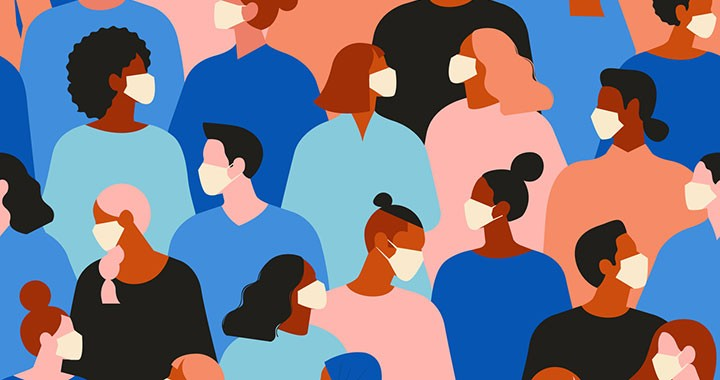
With more than 2.06 million cases, America has the world’s largest COVID-19 confirmed cases to date. It’s also first when it comes to the total number of deaths, with more than 117,000 people having died of COVID-19 complications. Nearly 7.5 million people have had confirmed infections worldwide and over 420,000 people died. As US states are opening up their economies, Harvard Global Health Institute director Dr. Ashish Jha predicts that the US will cross 200,000 deaths sometime in September. Jha explained his estimates only take into account the next few months, but COVID-19 will obviously not disappear after that.
“The pandemic won’t be over in September so I’m really worried about where we’re going to be in the weeks and months ahead. We’re really the only major country in the world that opened back up without really getting our cases as down low as we really needed to,” Jha noted, adding that the US is the only advanced country in the world not to have a proper contact tracing system setup. People should continue to maintain social distancing and wear masks, Jha advised. They should also “put pressure” on the government to advance testing and contact tracing programs.
“But even if we assume that it’s going to be flat all summer, that nothing is going to get worse, we’re going to stay flat all summer — even if we pick that low number, 800 a day — that’s 25,000 a month,” Jha pointed out. “In three and a half months, we’re going to add another 87- 88,000 people, and we will hit 200,000 sometime in September.” Jha said anyone who still thinks the summer will bring a dramatic decrease in cases is “engaging in wishful thinking.” Coronavirus cases and associated hospitalizations may be falling in Massachusetts, New York, New Jersey, and Connecticut, he said, but cases are surging in Arizona, Texas, Florida, and the Carolinas. The Harvard professor of public health said he is not trying to scare people into staying home by raising concerns about the number of deaths he’s predicting.
In Brazil, the coronavirus death toll has topped 43,000 with the total number of confirmed cases at over 850,000. It now has the second-highest number of COVID-19 deaths and cases in the world behind the United States. According to the health ministry, the COVID-19 mortality rate in Brazil is five% and nearly 388,500 people have recovered from COVID-19 in Brazil.
China reported its highest number of daily infections in months, raising concern over a second wave of the outbreak. In Beijing, authorities have reimposed lockdown measures after a new cluster of cases emerged last week. The cluster, the capital’s first locally transmitted cases in nearly two months, raised mainland China’s total number to 83,132. Almost 4,700 people have died in China, where the pandemic originated in December.
The World Health Organization says the pandemic is accelerating in Africa, with the most affected countries being South Africa, Algeria, Nigeria, Egypt and Sudan. In Yemen, medical authorities warn deaths linked to the pandemic could exceed war-related fatalities in the port city of Aden. The best way to prevent illness is to avoid being exposed to this virus. Learn how COVID-19 spreads and practice these actions to help prevent the spread of this illness.
Covid 19 isn’t going anywhere anytime soon so the recommendations to help prevent the spread of COVID-19 as the world’s economy reopens are: Keep 6 feet of social distance between yourself and others; wear a mask or cloth covering when around others-especially when in situations where you can’t maintain the 6 feet of social distancing; clean your hands often, either with soap and water for 20 seconds or a hand sanitizer that contains at least 60% alcohol; avoid close contact with people who are sick; disinfect frequently touched surfaces regularly and stay home if you are feeling any symptoms.
Read more
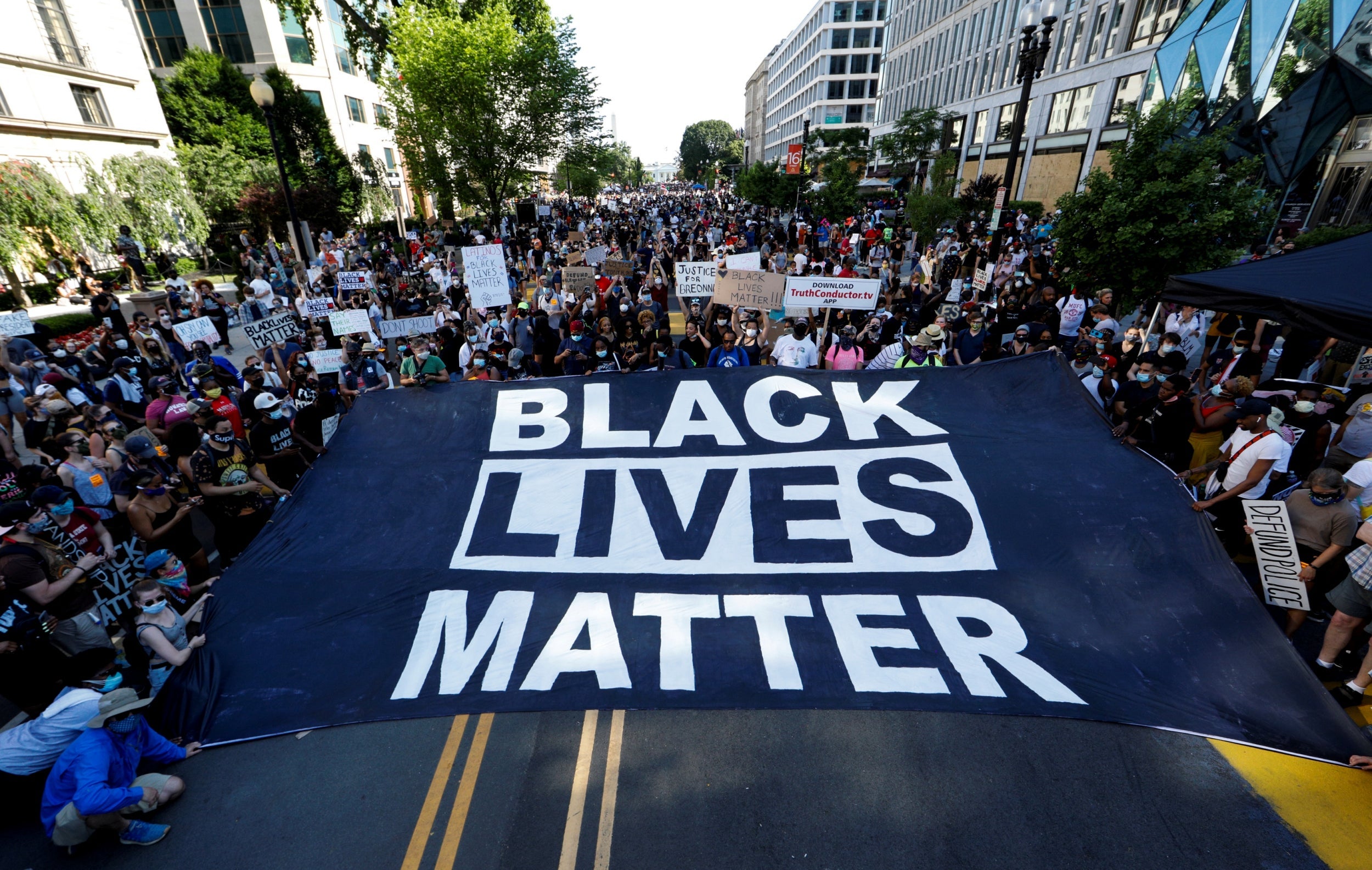
As historic protests continue to sweep the country two weeks after the death of George Floyd, the Minneapolis City Council announced it would move to disband the city’s police department. Nine members of the council — a veto-proof majority — made the vow during a community rally. The vow to disband the police came just days after the Minneapolis City Council voted to ban chokeholds and neck restraints. Congress is slated to introduce reforms that include a chokehold ban, a limit on qualified immunity for officers and a restriction on military weapons. While news reporting may be bias, social media videos of police brutality toward peaceful protestors has sparked many local governments to take action as the protests continue. Although many of these reforms will be subjected to a long debate among local officials, some activists say it is a good start.
In Louisville, KY, the City Council unanimously passed “Breonna’s Law” Thursday night that banned the use of “no-knock” warrants. The legislation was named after Breonna Taylor, a 26-year-old EMT, who was killed in her home while in bed in March by Louisville police officers while executing a no-knock warrant. Louisville Mayor Greg Fischer, who suspended the use of no-knock warrants last month, said he will sign the bill. “This is one of many critical steps on police reform that we’ve taken to create a more peaceful, just, compassionate and equitable community.” The officers involved in Taylor’s death are under investigation and have been placed on administrative leave.
New York’s state legislature voted to repeal parts of a provision that shielded police disciplinary records from the public. The repeal of 50-A means that police officers across the state must disclose personnel records used to evaluate performance. Criminal justice advocates have been pushing for the repeal for years. The legislation also bans officers from using chokeholds, prohibits false race-based 911 calls and appoints the state attorney general to be an independent prosecutor in any case where an officer shoots an unarmed person. The state Senate approved the bill and the state Assembly approved it with later in the day. New York City Mayor Bill de Blasio also announced a sweeping set of reforms that would shift funding from the NYPD to other sectors of the city’s budget. De Blasio said he will work with the city council to hammer out the details over the next three weeks, but told reporters Monday that the amount would be “something substantial.”
Washington DC Mayor Muriel Bowser announced she will sign the emergency legislation passed by the City Council that bans the police from using neck restraints on suspects. The bill also bans the use of tear gas, pepper spray, rubber bullets and stun grenades to disperse protesters. The Council also passed a bill that requires the mayor to release police body camera video from any police-involved death or serious use of force within three days of the incident. The family members of the person involved in the incident will be the first to see the video, according to the bill’s language.
Seattle Mayor Jenny Durkan announced short- and long-term changes to the city’s police force to address the concerns about police from residents. She said she will review the Seattle Police Department’s budget with a “special focus on listening community voices throughout the process.” Durkan has also called for an independent prosecutor at the state level to investigate and prosecute any police officers as well as updating the department’s procedures for mass protests.
New Jersey Attorney General Gurbir Grewal announced that the state will ban police departments from using chokeholds, carotid artery neck restraints or similar tactics. Grewal said their use has led to several incidents where a suspect suffered asphyxiation. The order provides an exemption “in the very limited situations when deadly force is necessary to address an imminent threat to life.”
Read more

Protests against police violence continue across the country as many cities have imposed curfews. Thirty-one states and the District of Columbia have activated their National Guards, with nearly 80 localities implementing curfews in response to the nationwide protests following the death of George Floyd. Protests largely remain peaceful during the day but by night, protests turn to riots. At least 9,300 people have been arrested across the US during protests.
Protesters across the US and globe keep gathering to march, some shouting slogans including “I can’t breathe,” which Floyd told the Minneapolis police officer who had a knee on his neck in a bystander’s video of the incident. Others have gathered to lie face down for 8 minutes and 46 seconds, the amount of time Chauvin held his knee on Floyd’s neck. In many cities, just before the 8 p.m. curfew begins, police begin shooting tear gas, flashbang grenades and rubber bullets at demonstrators in an attempt to disperse crowds.
In Houston, Texas, 16 members of George Floyd’s family joined a crowd of 60,000 protesters who marched to City Hall to remember Floyd, who spent most of his life in Houston before moving to Minnesota in 2014 for a fresh start. His family urged protestors to continue to fight for police reform and equality by protesting but said rioting is not the way to fix this. Chauvin and Floyd both worked security at the same night club with together with Chauvin working outside security and Floyd working inside the bar. Former coworkers of the two said they bumped heads over Chauvin’s aggressiveness with patrons of the club. Floyd’s family believe George’s death was, in part, personal.
Two separate autopsies confirmed Floyd’s death was a homicide. George Floyd’s memorial service was planned for Thursday in Minneapolis, and his funeral was scheduled for next Tuesday in Houston. Minnesota Attorney General Keith Ellison has filed charges against all four Minneapolis police officers involved in the killing of George Floyd. A charge of second-degree murder was added against Officer Derek Chauvin, who was already facing a third-degree murder charge. The other three officers present were charged with aiding and abetting the murder. Thomas Lane, Alexander Kueng and Tou Thao were arrested with bail set at $750,000 each. Minnesota, Governor Tim Walz said the state’s Department of Human Rights has opened a civil rights investigation into the Minneapolis Police Department.
Many wonder how we got here or believe the arrest of all four officers involved should quell the protests but George Floyd is not the only person protestors seek justice for. Protestors say Floyd was just the last straw in a growing list of black people that have been killed with no charges for the officers involve or charges being filed months after, only after protests start. News media coverage of the protests has been largely bias and focused on reports of looting have marred the message peaceful protestors want to make. Social media sites like tik tok or youtube can give the world a more factual account of what goes on during these protests in every city by those that are actually there and countless videos show protestors stopping the looters, chasing them off or handing them over to police.
Read more

The U.S. Labor Department reported another 2.1 million workers filed for unemployment benefits over the last week, the lowest total since the coronavirus crisis began though indicative that a historically high number of Americans remain separated from their jobs. The combined total of job losses since coronavirus lockdowns began in mid-March is a staggering 40.7 million. One in four U.S. workers has lost their job in just 10 weeks.
Continuing claims, or those who have been collecting for at least two weeks, numbered 21.05 million, a clearer picture of how many workers are still out of work. That number dropped sharply, falling 3.86 million from the previous week. That decline in continuing claims suggests that the reopening of states is pushing businesses to rehire some of the people let go when the virus hit. The Institute for Policy Studies reports that during the same period the combined wealth of U.S. billionaires soared by $485 billion.
State labor departments have been working since the beginning of the pandemic to clear their backlogs of jobless claims, after the surge in unemployment crashed systems that were ill prepared for such volume. Newly laid-off workers have overwhelmed unemployment offices in numerous states, leading to frustration and delays in applying for and receiving benefits. The high jobless numbers persist even as all states have reopened their economies to various extents. Las Vegas casinos will be resuming activities late next week, Disney resorts also have targeted July reopening dates and Los Angeles is allowing retail stores to resume business. Restrictions are likely to be loosened soon in New York as well.
Many businesses are wrestling with multiple dynamics stemming from the biggest surge in in layoffs since the Great Depression. The Federal Reserve reported Wednesday that business owners are seeing workers reluctant to return to their jobs because of safety concerns, child-care issues and “generous” unemployment benefits from the government. Pennsylvania saw the biggest rise in claims last week with 6,892, according to numbers. Many large states, though, saw declines from a week earlier Washington fell by 86,839, while California declined by 32,088 and New York decreased by 31,769.
Many struggling retailers were forced to file bankruptcy during the pandemic. FoodFirst Global Restaurants, the parent company of the Brio Italian Mediterranean and Bravo Fresh Italian restaurant chains filed for Chapter 11 Bankruptcy in April. The company said that 71 of its 92 restaurants had temporarily closed amid the coronavirus outbreak. The company employed over 10,000 people nationally before the pandemic.
Neiman Marcus filed for Chapter 11 bankruptcy on May 7, citing “inexorable pressure” from the coronavirus pandemic. They employed over 13,000 people before the pandemic. J. Crew filed for Chapter 11 bankruptcy protection on May 4. The company now plans to convert $1.65 billion of its debt into equity. The company said they will continue day to day operations with plans for downsizing, leaving 9,400 jobs up in the air. Stage Stores, which owns Goody’s, Palais Royal, Bealls, Peebles, and Gordmans, filed for Chapter 11 bankruptcy on May 10, saying that coronavirus-related closures exacerbated a “challenging market environment.” The company said it would start winding down operations while seeking a buyer for part or all of its business. They employed over 13,000 people. JCPenney filed for bankruptcy on May 15, saying in court documents that pandemic-related disruptions pushed it over the edge. It will close about 30% of its stores leaving many of its 90,000 employees out of work.
Read more
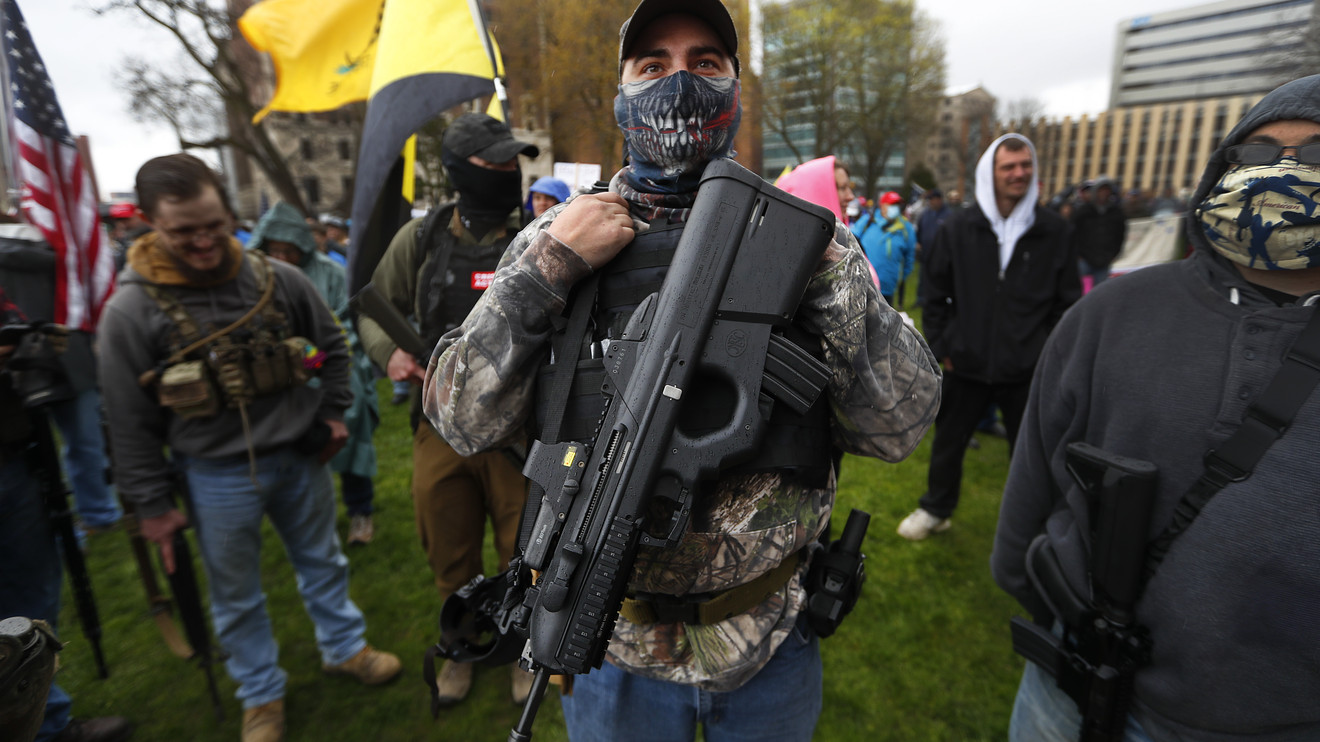
Michigan Governor Gretchen Whitmer extended a state of emergency declaration until May 28, over the objections of some state lawmakers. Whitmer signed a series of executive orders hours before the state of emergency was set to expire on April 30 and extended it to May 28, citing the growing number of cases and deaths in the state from the disease. The governor said that in some counties in western and northern Michigan, cases are doubling every six days or faster.
When the order was extended, the state had 41,379 confirmed COVID-19 cases and 3,789 deaths, according to data from the Center for Systems Science and Engineering at Johns Hopkins University. Wayne County, Michigan, is the fourth-highest county of deaths in the nation with 1,782 coronavirus-related fatalities, according to the data.
Whitmer has faced fierce backlash for her strict stay-at-home mandate. She extended the order earlier this month until May 15 but eased some restrictions on public activities as the state’s coronavirus cases stabilize. Whitmer said that while she understands that people are anxious to get back to work and are restless, Thursday’s protests were “disturbing. … Swastikas and the confederate flag, nooses and automatic rifles do not represent who we are as Michiganders. There is nothing that I want more than to just flip the switch and return to normal, but that’s not how it’s going to work, unfortunately. The only way we can get through this and take the next steps forward is if we all continue to do our part.”
Hundreds of people protested outside the Michigan Capitol building in Lansing-defying social distancing rules, many of them armed with assault rifles and wearing tactical gear. The crowd packed into the Capitol rotunda and tried to storm onto the floor of the legislative chamber. Protesters held signs, waved American flags and even carried firearms, while some chanted “Let us in!” and “This is the people’s house, you cannot lock us out.” Others tried to get onto the House floor but were blocked by state police and sergeants-at-arms.
The House and Senate had voted to approve legislation that would allow them to sue Whitmer over her emergency declarations as armed protesters stormed the state capitol. They also voted on another bill that would extend some of her emergency measures, but crucially not the stay-at-home order. Their bill would also allow restaurants, bars and gyms to reopen. Whitmer vowed to veto the bill. Amid the chaos Democrat Senator Sylvia Santana was pictured wearing a bulletproof vest and surgical mask while at her desk, as a colleague tweeted an image of rifle-wielding men on a balcony above her.
The governor is claiming authority to rule by executive order under two pieces of legislation – the 1976 Emergency Management Act and a similar 1945 law that allows a governor to declare a state of emergency and assume emergency powers. Arguments center around the fact that the 1976 law says governors must go to the Legislature if they want to extend the state of emergency past 28 days. The 1945 act says governors decide when the emergency is over.
Whitmer’s extended order bans gyms, theaters, bars and casinos from opening, and limits restaurants to carry-out and delivery orders only. Restaurants can allow up to five people inside at a time to pick up orders, but only if they follow social distancing guidelines by staying six feet apart. The restrictions do not apply to office buildings, grocery stores, markets, food pantries, pharmacies, drug stores, medical equipment/supplies providers, health care facilities, residential care facilities, juvenile justice facilities, warehouse and distribution centers, or industrial and manufacturing sites.
Read more
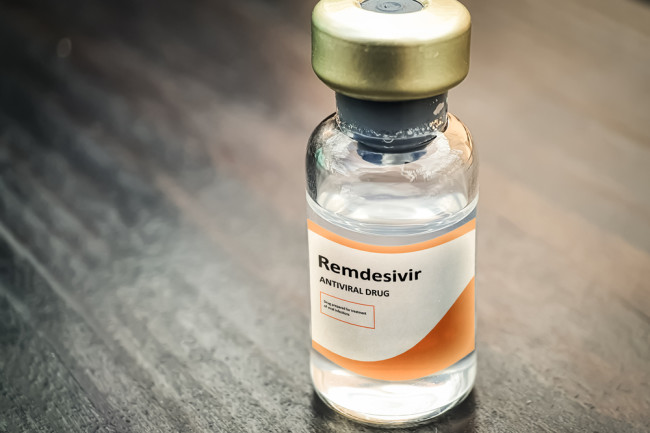
The Food and Drug Administration (FDA) announced the emergency use authorization for the antiviral drug remdesivir, after preliminary results from a federal trial showed the drug could speed recovery in patients infected with the coronavirus. The finding, which has not yet been peer reviewed, came after another study found no benefit for the drug in severely ill patients in China. The new results suggest a moderate improvement in the death rate of patients taking remdesivir, whose hospital stays were shortened, on average, from 15 days to 11.
The issuance of an EUA is different than FDA approval. In determining whether to issue an EUA, the FDA evaluates the available evidence and carefully balances any known or potential risks of any unproven products with any known or potential benefits of making them available during the emergency. Based on evaluation of the emergency use authorization criteria and the scientific evidence available, it was determined that it is reasonable to believe that remdesivir may be effective in treating COVID-19, and that, given there are no adequate, approved, or available alternative treatments, the known and potential benefits to treat this serious or life-threatening virus currently outweigh the known and potential risks of the drug’s use.
The emergency use authorization (EUA) allows for remdesivir to be distributed in the U.S. and administered intravenously by health care providers, as appropriate, to treat suspected or laboratory-confirmed COVID-19 in adults and children hospitalized with severe disease. Severe disease is defined as patients with low blood oxygen levels or needing oxygen therapy or more intensive breathing support such as a mechanical ventilator.
The EUA requires that fact sheets that provide important information about using remdesivir in treating COVID-19 be made available to health care providers and patients, including dosing instructions, potential side effects and drug interactions. The EUA is temporary and will be effective until the declaration that circumstances exist justifying the authorization of the emergency use of drugs and biologics for prevention and treatment of COVID-19 is terminated. It may be revised or revoked if it is determined the EUA no longer meets the statutory criteria for issuance.
Possible side effects of remdesivir include increased levels of liver enzymes, which may be a sign of inflammation or damage to cells in the liver; and infusion-related reactions, which may include low blood pressure, nausea, vomiting, sweating, and shivering.
The top coronavirus task force scientist Dr. Anthony Fauci welcomed news of the first potential treatment for COVID-19. The U.S. government will coordinate the donation and distribution of remdesivir to hospitals in cities most heavily impacted by COVID-19. Given the severity of illness of patients appropriate for remdesivir treatment and the limited availability of drug supply, hospitals with intensive care units and other hospitals that the government deems most in need will receive priority in the distribution of remdesivir.
Read more
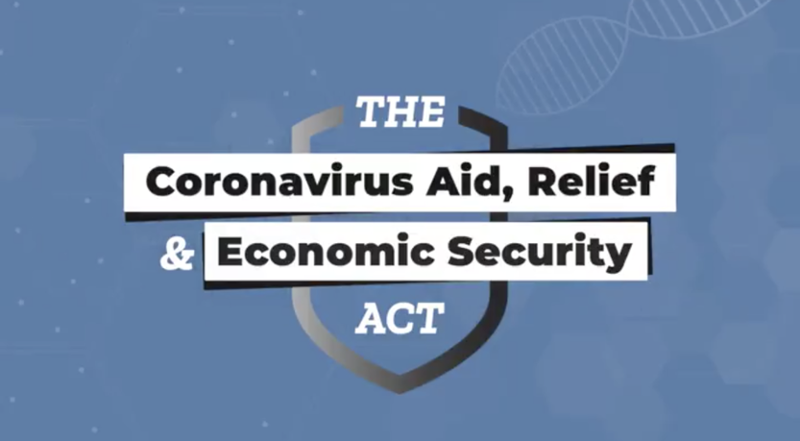
The US Senate overwhelmingly approved $484 billion in new coronavirus aid with most of the money replenishing the Paycheck Protection Program, set up to provide forgivable loans to small businesses. The bill adds another $310 billion to the Paycheck Protection Program, another $75 billion for hospitals, $25 billion for testing and $60 billion for emergency disaster loans and grants.
The bill provides no new stimulus checks for U.S. households, no additional money for food stamps, no limits on fossil fuel bailouts, no funds for election security, no bailout for the U.S. Postal Service and no additional funds for hard-hit state and local governments. Lawmakers were criticized for refusing to take up new assistance to hard-hit U.S. residents — like cash payments and food aid — in the latest relief bill. They were also criticized for not regulating the disbursement of the initial funds which allowed big businesses like corporate chain restaurants getting tens of millions of dollars in loans meant for small businesses.
They contend lawmakers are failing to provide for millions of unemployed people who are unable to pay rent and increasingly at risk of going hungry. Progressive lawmakers are demanding $2,000 monthly payments to all U.S. households and open enrollment in Medicare for uninsured and unemployed people, when lawmakers take up another round of funding, the so-called phase four coronavirus bill.
Senators are in talks for a phase four bill with priorities for that legislation including federal assistance for people having trouble paying rent, according to a Democratic source. Schumer also cited the need for funds for election reform, hazard pay for essential workers, including doctors, nurses and grocery store clerks, and funding for the U.S. Postal Service. Many are skeptical since the virus bailouts have already cost over $2 trillion, pushing our annual deficit this year to close to $4 trillion.
The pandemic continues to batter the U.S. economy as the Labor Department reported another 4.4 million U.S. workers filed for unemployment benefits over the last week, raising new jobless claims over the past five weeks to more than 26 million — a scale that hasn’t been seen since the Great Depression. As of March 13, there were already 7.1 million unemployed Americans, according to the U.S. Bureau of Labor Statistics. When the figures are combined, it would equal more than 33 million unemployed, or a unemployment rate of 20.6%—which would be the highest level since 1934.
Read more
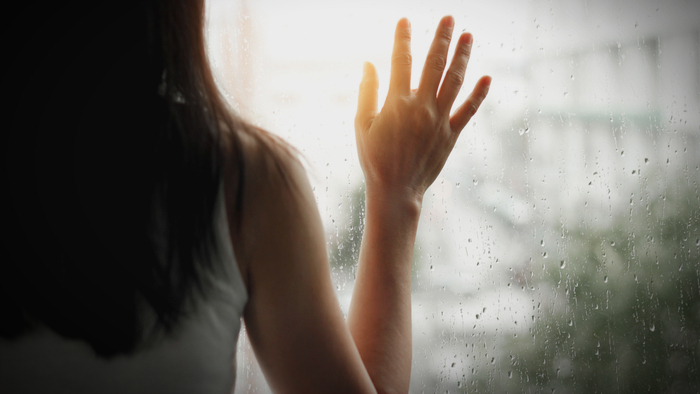
As countries impose lengthy lockdowns to combat the spread of the coronavirus, reported cases of domestic abuse have spiked around the world. In the weeks since populations worldwide have been directed to “stay home” to prevent the virus’s spread, cases of domestic violence have surged — and that’s reported cases. Women who are victimized are now confined to isolated homes with abusive partners whose coercive and physically violent tendencies are enabled and further inflamed by economic stressors. Supportive community ties are severed, while emergency services, shelter systems, and social services are overwhelmed and congenitally underfunded.
Millions of Americans are not safe from violent abuse at home and now the federal, state and local governments are telling everyone to stay home – for their own safety. For some people, going to work may be their only reprieve from emotional abuse and violence. For others, the only place their children are safe from abuse is at school. Now they have been told to stay at home. Few jobs are completely safe from the economic fallout of the coronavirus crisis and stressed abusers have their targets at home.
According to statistics released by the U. N., reports of domestic violence in France rose 30% following the country’s lockdown on March 17; during the first two weeks of lockdowns in Spain, the emergency number for domestic violence received 18% more calls; and help lines in Singapore have received 30% more calls. In the US, law enforcement agencies have seen domestic violence cases rise up to 35% in recent weeks. Keeping in mind, that 50% of domestic abuse cases go unreported.
Advocates fear domestic violence survivors may have trouble getting away from their abusers and are calling the rise an epidemic during a pandemic. They are urging communities around the world to make sure resources are readily available for survivors. Even before the pandemic, an average of 20 people in the United States experienced physical domestic violence every minute. Research shows 1 in 4 adult American women and 1 in 7 adult American men have experienced some type of severe violence – including being hit with something hard, being kicked or beaten, or being burned on purpose – at the hands of an intimate partner.
Advocates are already seeing a pattern of increasing domestic violence around the world, correlating with the timing of social distancing lockdowns. In Seattle, one of the first U.S. cities to have a major outbreak, the police saw a 21% increase in domestic violence reports in March. In Texas, during March the Montgomery County District Attorney saw a 35% increase in domestic violence cases. Police around the country are adapting their domestic violence response plans to prepare for the expected increases and to ensure victims can get help even with restrictions on public movement.
Many organizations that serve survivors of domestic violence may also struggle to stay afloat during the pandemic. Many child-protective organizations are experiencing strain with fewer workers available, so they may be unable to conduct home visits in areas with stay-at-home orders. While such operational changes may lead to inaccurate reporting of child abuse and neglect, many advocates are expecting a surge in cases to continue to rise while they’re resources are still limited during the pandemic. The recent US$2 trillion federal CARES Act included assistance for nonprofits that provide support for domestic violence victims, letting them apply for business loans and help meeting payroll.
Read more












